
Featured Curators Make Cycle 1: Krystina, Krystle, Marc, Megan, and Rebecca
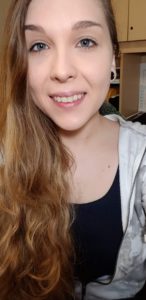 Krystina Hockman
Krystina Hockman
Make Cycle 1 has been all about introductions. We first met one another and found a lot of similarities amongst ourselves. Next, we discovered that a lot of us shared many similar opinions about literacy and discovered that we all write every single day, whether through text, emails, or for school. This provided us with a great introduction to the importance of writing and is necessary as we transition from college student to future educators as we must be able to emphasize this importance to our students as well. Krystal Bandith’s introduction post summed up the importance of writing beautifully with the following excerpt:
When you practice writing, you practice the ability to organize and articulate the endless stream of thoughts and emotions you experience every day. When you do that, you open the door to learning incredibly useful things like self-awareness, communication, emotional intelligence/empathy, critical thinking.
In Weeks 1 and 2, we had the opportunity to read some powerful works meant to provoke critical thinking about how we write and not just what we write. Up until this point in most of our academic and professional lives, we wrote with purpose and with an audience in mind; however, we now must pay attention to exactly how we accomplish these writing goals so that we can teach our students to do the same.
The children’s book What Do You Do With an Idea? introduced readers to a child who had an idea that was unique and their own but sometimes burdensome, as most ideas can sometimes be. Children have these “ideas” and sometimes lack the ability to express them fully so that others, especially adults, may understand. Bailey Hunn took a great analytical stance on the purpose of this story and discussed whether books like this are too complex for children and posed the question, “At what age do they start to have those deeper conceptual thoughts and before that age what do they think of this book?” I think her insight is an important one to consider as we, as educators, must make thoughtful decisions in the books we introduce to our students as we want to make sure that they are age-appropriate and thematically relevant to their lives.
Youth literacy is a topic that many of us who aspire to teach will put many efforts into understanding. In Andrea Lunsford’s “Our Semi-Literate Youth? Not So Fast,” the author quickly introduces us to the term “life writing.” A lot of older people would say that our “life writings” (i.e. texting, emailing, Tweeting) are harming our literacies but Lunsford’s study proves otherwise. Daniela Quintana Munoz expresses the importance of our social media use to our literacy mastery by stating, “The internet is not frying our brains, but it’s helping us develop a range of different writing styles, tones, and formats.” As we move into teaching, we must remember that “life writing” will be a great way to break down the barriers of writing that many of our students will face. The linguist John McWhorter offers his insights into texting and its effects on literacy in “Txtng is Killing Language. JK!!!” by suggesting that texting is closer to speaking than it is to writing but that the utilization of text has transformed into a new “language” thus making youth “bi-lingual.” By offering as many avenues as possible for students to explore their own literary preferences, we are only encouraging their growth as readers and writers.
Chrysanthemum, a children’s book about a girl who found herself bullied for her long and unique name, used repetition throughout to capture the attention of the reader as they embraced a word that was hard to pronounce and followed the child through her evolution from being embarrassed by her name to loving the uniqueness of her name. The repetition forced the reader to pay attention and memorize the rhythm of the book; in fact, most of us mentioned that they remembered reading this book when they were children, which further enforces the importance of repetition as a literary device. Again, Krystal offered an eloquent analysis of the book’s repetition and the way it “highlight[s] the change which is usually the positive outcome or resolution. This way, children are able to follow the emotional transformation of the plot intuitively, and thereby understand the message/moral of the story.”
Both “A Girl Named Jack” and “Second Daughter’s Second Day” by Jacqueline Woodson used repetition as their literary device; however, the repetition was in the formatting rather than the words themselves. Each stanza was carefully formatted and then repeated again to help drive home the poem’s theme. The conversational format of “A Girl Named Jack” allowed the reader to follow the parents as they discussed the newborn’s name but the repetition allowed the reader to feel caught in the middle, just as the baby might have felt. In “Second Daughter’s Second Day,” repetition was used to go back and forth from what was happening within the hospital and out in the world, forcing the reader to feel the constant pull between the safety of a newborn in a hospital and the uncertainty faced by African-Americans who must live outside of those safe walls. Laurence Gammell was inspired by these pieces too and offered a great lesson plan idea of asking his students to write a story behind their names to give him a “better understanding [of] each one of my students” and to create lesson plans based upon “student cultures in the classroom.”
We wrapped up Make Cycle 1 with our very first makes! The class created many wonderful poems and stories that offered the rest of us insight into each other’s personal lives. The excitement was evident as most (if not all!) of the shared pieces were well-crafted and took an immense amount of time and effort to complete. From books about our pets to stories about our families, this Make Cycle proved that many of us have a flair for creative writing and should we choose to teach, will have no problem imparting this passion on our future students. The ‘ABCs’ style of writing would be a great project for our future students. My favorite example of this style of storytelling was the piece by Sophia Bambino and like some of our readings, it was incredibly personal and made us feel like we could relate to her without ever having met her in person.
After discussing names and the importance behind them, the majority of us took to writing a piece that shared a bit of reflection on our own names and what they meant to us. A great piece with the theme of “name” was crafted by Olivia Najera. She incorporated repetition into her poem and could be a great inspiration to future students as we teach them how to write a poem:
Olivia, Olivia, Olivia
That is my name
Although I have more and go by
Oli, Olive and Liv
Olivia, Olivia, Olivia
A name I wanted to change
Until I learn to love it
And love it to this day
Olivia, Olivia, Olivia
the name that defines who I am
the one that makes me me
and forever I will be
Olivia, Olivia, Olivia
The girl who didn’t like her name
Now loves it after all
And spreads joy everyday.
I am absolutely blown away by the commitment our class made to this first Make Cycle! From start to finish, the contributions were plentiful and well thought out. I am very excited to see how we grow as writers and future educators throughout the rest of the semester.
Author Bio: Krystina is a recent transfer from Solano Community College and a former Dean’s Assistant at the same college. She is moving to Seattle, WA to live with her fiance, who is a member of the Coast Guard. She is working toward a Multi-Subject credential and then hopes to pursue a Master’s degree in Instructional Technology. Outside of school, her hobbies include gaming, reading, writing, and cooking.
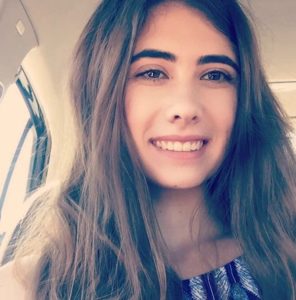 Krystle Duggins
Krystle Duggins
When it came down to our first day of classes, most of us were nervous about how our online class with Professor Jaxon would go. Fortunately, these past three weeks have shown how much we are capable of. Our hard work shows we are no longer nervous anymore, but ready and looking forward to the next assignment. I will reflect what we have accomplished so far in Make Cycle 1 during these past 2 weeks, as well as choose some examples from my peers that I thought were very interesting and eye opening.
On the first day, we were asked to sign up with Google +, a discussion board where we can communicate with one another and post our responses from our readings and then introduce ourselves to the rest of the class. This helped us get to know each other and establish a community among the discussion board. This made responding to others’ work much easier: rather than responding to name and a face that we have information about as a person. Many of us included some information about our past, present, and finally what we hope to accomplish as teachers. Along with this information we expressed our thoughts on writing and what counted as writing in today’s world.
Within week one of school, we were required to respond to three separate texts. The first text, What Do You Do With An Idea? by Kobi Yamada, told a story about a little boy who got neglected because others thought his idea was not practical. However, little by little the idea began to grow and the little boy began accepting his idea once more. His idea, at the end of the story, should how much his idea could positively change his environment and the people around him. The second text, “Our Semi- Literate Youth?” Not So Fast?” by Andrea Lunsford, is an article that showed the positive side of today’s technology and how it does not affect the writing that students do. While the third and final text, “Txing is Killing Language. JK!!!” by John McWhorter, shows that our modern society uses texting to communicate. It has developed its own form of language that does not limit the skills that students possess when writing essays or emails. McWhorter explains that we were never able to write the way we talked with the limited technology we had before smartphones. After reading everyone’s responses to these three texts, I found Kaylin Renfo’s work interesting. She talked about how much she loved the authors, Lunsford and McWhorter, defending the younger generation and their way of communication. She describes that even though texting is seen as a nuisance, it can lead to many advancements, like a new language that allows us to write the way we talk. Overall, I think she did amazing work on this discussion.
Week two of classes, we looked at another three forms of writing. The first, Chrysanthemum by Kevin Henkes, is a childbook story about a little mouse going to her first day of school. As the teacher does roll call of everyone names, the children began to make fun and laugh at Chrysanthemum’s name. They said it was too long and not having a special meaning other than a flower. They told her to change it into a more normal name. However, after a teacher and her parents told her that her name fit perfectly and nice as a flower can be. She then began to love her name and everyone soon accepted who she was. The second text, “A Girl Named Jack” by Jacqueline Woodson, is a poem that tells a story about a father wanting to name his daughter “Jack.” This name was supposedly to toughen her up without even knowing what her personality will be later in life. The mother, on the other hand, did not believe a boy’s name would make a difference. Eventually they ended with a compromise with the name Jacqueline. The third text, “second daughter’s second day” also by Jacqueline Woodson, is a poem about the African America community facing injustices. The character describes the leaders who spoke up about the injustices and now does not know what to feel about her future. Will she be as great as them or will time tell? In all texts, the authors were able to make words stand out with italics. This promoted the importance of the word in each story/ poem. I found Marc Blair’s discussion quite interesting when he read “A Girl Name Jack.” He describes not using, “…the name as a reason for her to toughen up.” This helps a person to indicate what was the real moral of the story and the importance that a name does not define the person. It is the personality that the child has developed.
For our last assignment of Make Cycle 1, we were asked to write a story or poem about how we got our name, the story of our birth, or a personal story in general. We were also given two options on how we were going to submit this assignment. One option was to type our story/ poem with a program called StoryJumper. This program allows you to create a power point like story that includes adding our own voice to the assignment. The second option was writing a standard poem in Google +. When reading everyone’s posts on this assignment, I was amazed how well everyone did. Most of them were so beautifully articulated. I especially enjoyed reading Krystal Bandith’s poem. Here is an excerpt of her poem:
“Krystal, with a K”
If my name started with a C
Would I be more like me?
C-R-Y my parents standing by
Why does she cry, cry, cry?
If my name started with a C
Would I be more brilliant?
Shiny, pretty, perfect
Tough, diamond-like resilience?
My name doesn’t start with C
But I have a T-A-L
To be talented at walking tall
To talk the tales I tell
My name is Krystal with a K
As in kind, keen, and kooky
Krystal with a K
Like in case you thought you knew me
K because I kuestion everything
K because I kan
K as in Krys, like
This:
I
Am
She wrote about how she got her name. My name is one of the same, but quite different. I understood her story from a personal level. She included a line repeatedly as part of the first line of almost each stanza. I felt like this was a perfect example that a name doesn’t define who we are, but we can still resonant some good aspects from it. Krystal describes her poem being about, “…a journey to becoming me, as defined only by me.” This poem puts a lot of thought on different aspects and parts of her name that leaves the reader questioning about his or her name. Am I defined by my name or do I defy who I am? It also produces a nice connection between the poem “A Girl Name Jack.” This is another reason why I choose Krystal’s poem it related to another assignment showing we can use what we learned.
Overall, I am very happy to look over each of my classmate’s discussion for Make Cycle 1. I have found this experience quite enjoyable and educational. I have learned from many own viewpoints. Each assignment was done so beautifully. I am looking forward to learn more from this class. I hope you guys enjoyed this response/ reflection on Make Cycle 1. We did so great! Let’s keep it up! I am ready for the next assignment. Are you?
Author Bio: I am from Yuba City, CA and I have recently moved up to Chico to further my studies in Liberal Arts. I ended up going to Chico State because my great elementary school teachers I once had graduated from Chico State. I learned so much and they inspired me to become a teacher to inspire others. I graduated from River Valley High School and Yuba College. I have associates in Social and Behavioral Sciences. My interests include video games, anime, drawing, and music. I love playing RPG video games because they tell a story: a story we can learn from and take away into reality.
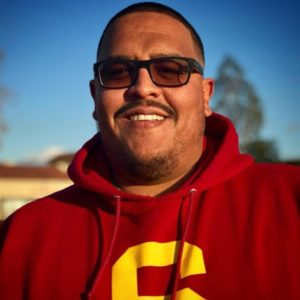 Marc Blair
Marc Blair
The first cycle allowed the classmates to not only complete our assignments and be creative by creating a storybook or poem, but it also allowed the class to introduce ourselves. We introduced ourselves through different ways and in some cases gave a bit of information about our family. When writing, influences and inspiration can come from anywhere and those influences show in writing. As one student, Madison La Ray, explained in her writing, her name is connected to her parents showing her own personal man, woman, and child triangle of life. A connected family not just by blood but by name.
“La” for La RayThe start and the end of my name is very easy to explain.
Madison from my mother, Lozada from the other.
Now, the other of course being my father, has an extra name of his own to give.
It’s a part of his first name, the one to identify who he is.
Cristopher Raymond.
To sum the story up, and to make it go by faster.
To make this poem easy to understand. To keep it from being a disaster.
The part of his name, that I call mine, is the second part Ray.
It’s the middle part of my own, he named me Madison La Ray.
I’m a girl and he is not, so he had to make a small change.
So, to honor our Mexican heritage, and to make this make more sense.
He made it very simple, by adding “La” to begin.
Other students told simpler stories but yet just as personal. Bailey Hunn created her own storybook to tell her story of finding her first best friend. Her best friend in this case was her cat.
Even with the few pages and words used for younger audiences, Bailey in those few pages told what type of person she is. Her big heart is shown as she tells of her adopting a cat from a shelter. Less is certainly more and you can understand the cat found love in Bailey just as Bailey found love in her cat Roku.
Behind keyboards, today’s world tends to be a bit more open than usual. We share a lot, some say too much, some get some relief in finding others relatable to their own lives. Students like Rebecca Carney shared her story of her journey to Cal State Chico as a mother with a family. I myself shared similar information thinking maybe one day our stories can provide some assistance, confidence or just something cool so that others can maybe relate and stay focused on their goals. Any goal is possible, I think sometimes we tend to feel alone, defeated, or organized. But I think the coolest thing is the internet and communities like this class that allows everyone to find or stumble onto that one thing that may make a difference to keep them going.
Author Bio: My name is Marc Blair and I am a senior (online) here at Cal State Chico. I live in Riverside, CA (southern California). It’s been a long road since I am a non traditional student having came back to college at 32 after being a “corporate guy” for 10 years. I got tired of having a “job” and wanted my own “career” in teaching. I transferred from Coastline Community College into Chico which has been great (all online). I love sports, video games and graphic novels. My wife of 13 years and I juggle our time between work and spending as much time as we can with our kids Jack (1 year old), Zoey (13) and Chase (11). Their sports take up a great portion of that but we wouldn’t trade it for anything.
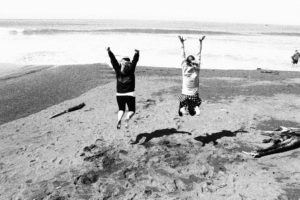 Megan Gatzka
Megan Gatzka
I enjoyed listening to the mentor videos and gained insight by truly listening to the details as the reader spoke. The story about Chrysanthemum had several features that resonated with me. Throughout the book, the author compares Chrysanthemum herself as a person with an actual flower and describes aspects that correlate both. Words such as ‘wilted’ and ‘let’s pick her’ use descriptive words that work for both subjects. My favorite line in the story is “and she was…absolutely perfect.” This reminds me of the stories my parents told of my adoption. At three days old, my parents adopted me and brought me home. My dad’s song for me has always been “Isn’t She Lovely” by Stevie Wonder and I love this line from the book. If I were to write my own book, I would use the model of making an example as with Chrysanthemum’s teacher. The admiration the students felt for her made them rethink the way they made fun of Chrysanthemum. Borrowed elements I would consider using would be the constant repetition and compare and contrast to an object.
Within the story “A Girl Named Jack” the father is precluded to believe that his name, “Jack,” is a strong name and will make his daughter strong as well. My favorite line was when he states, “Raise her right, my father said, and she’ll make that name her own.” He doesn’t believe that a name makes the person and I believe that. In my own writing I would model this by breaking down the name as the story did from Jacqueline to Jack and show both sides of the story.
The features that resonate with me in the “Second Daughter” was that the author went back and forth between current events and how they relate to the girl in the story. My favorite lines in the story were “…ready to change the world” and “You can become anything.” These were wonderful lines to use to describe what world leaders were showing these children what they could become. Modeling this poem in my own writing would be fairly easy as it doesn’t rhythm. Comparing the second daughter to great leaders and historical people of color was able to show what she is capable of.
I recently read the book What Do You Do With An Idea? because I had just received a new copy in our school library. There is such a deep meaning in the text about not giving up on your dreams. It helps students to see how ideas form and why they have ideas at all. If it is a really good idea and something the student believes in, it will begin to nag them just like it did in the story. The emotions the little boy goes through are vast. First he is afraid to talk about his idea and bottles up his emotions which is never good. However, as the story goes on, students learn that pursuing your dreams makes you feel better. It gives you confidence to face the negative people tell you you’re different. I believe the moral of the story is that if we word hard to accomplish our goals and think outside of the box, anyone can change the world.
John McWhorter made me think about texting in this day and age. As a non-phone person, texting for me is a miracle drug. I like the messages short and sweet and absolutely despise group texts. Mr. McWhorter called this era a balancing act of emergent complexity. What this means is that writing a text is equal to our speech. Nobody talks the way they write an essay or a report About halfway into the video I realized that I wasn’t paying attention to what Mr. McWhorter was saying because he literally wasn’t coming up for air. I’m not sure if anyone else felt anxious over the way he rambled. There were no periods in his speech and no pauses to digest the information he was giving. Tell me I wasn’t the only one?
I believe all of the discussions were interesting, but the one the stuck with me the most is “What Do You Do With an Idea?” The lesson really broke down how to view the story from different perspectives and through students eyes. In the classroom, this would be an excellent exercise to break down the story and pull from it the underlying meaning.
In addition to the readings this week, we created our own artifacts using the mentor texts as models. Here are some standouts I chose among our Makes this week:
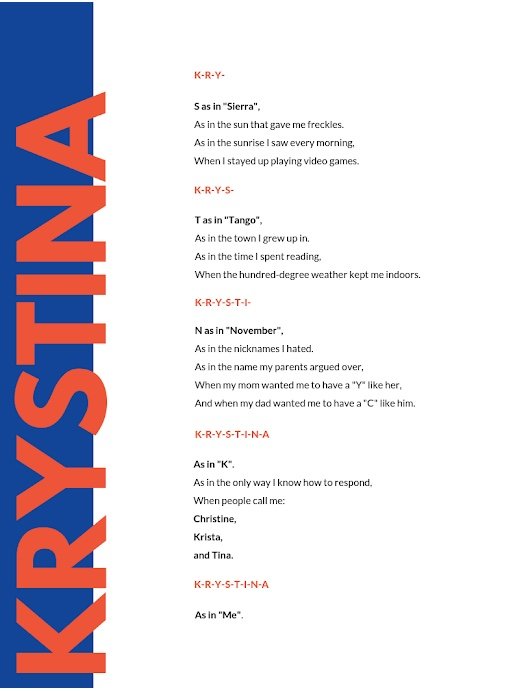 Krystine Hockman: The format in which Krystine used to create her poem was pleasing to the eye. The contrasting colors of the red, white and blue made it stand out. It was easy to follow and read. She incorporates the ‘name theme’ into the poem by combing a few valuable letters to short poems. The repetition helps it to flow. Krystine’s goal was to help the reader to spell her name correctly.
Krystine Hockman: The format in which Krystine used to create her poem was pleasing to the eye. The contrasting colors of the red, white and blue made it stand out. It was easy to follow and read. She incorporates the ‘name theme’ into the poem by combing a few valuable letters to short poems. The repetition helps it to flow. Krystine’s goal was to help the reader to spell her name correctly.
Krystle Duggins: Krystle chose to create an “All About Me” book. In the reflection summary, she states that the book told about how she got her name. It was in biography format and had an easy flow. I enjoyed the different backgrounds and text templates used to keep the story interesting.
Bailey Hunn: I believe this is one of my favorite peer makes because Bailey wrote about her cat. I myself love cats and always adopt from a shelter. I have had several blacks cats like Roku (Bailey’s cat) because I know they are harder to adopt. The book had an easy storyline to follow and gives information about what a shelter might be like.
Amanda Sanders: Amanda wrote “A Book About Me” as a biography. She used the repetition phrases which helped the book to flow and connect. The front cover was eye catching, making you want to read the book.
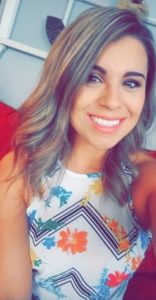 Rebecca Carney
Rebecca Carney
The last two weeks have been filled with readings and a TED talk by John McWhorter. Speaking as one who has never used any of the programs/applications such as our Google + community and Storyjumper, I can honestly say I think we all deserve a pat on the back! There have been so many great posts that it makes me truly look forward to reading them all. We started our first week off by introducing ourselves and I know I cannot be the only one who saw a familiar face; it was great to read about everyone and their lives–so many relate to one another in various ways.
As for the assignments for week one, we were to discuss our own literacies and writings as well as read an article “Our Semi-Literate Youth? Not So Fast” that in a nutshell compared how we speak to how we write in a professional manner, a book “What Do You Do With An Idea?” which was about a little boy who was fighting the thought of having an idea and tried to keep it contained but when it came out he realized just how great it truly was, and finally, we watched a TED Talk from John McWhorter making his statement that texting is not killing language, rather it is making language grow and less complicated to get what we want to say out to whomever it may be.
My fellow peers had great responses for each article, book, and video: the first one to stick out to me was by Olivia Najera when she responded to the book reading, “I think once we get older the less willing we are to share our ideas. We may be afraid and think we will be made fun of, while children at times could care less what others think and share it all”- how true is this statement?! Most children, like mine, have no filters and just say whatever idea first pops in their head versus an adult who weighs many factors before blurting out your idea.
Week two, was hands down my favorite readings thus far. We read Chrysanthemum by Kevin Henkes that was about a female mouse and her uncommon and very long name going to school and quickly realizing the struggles that came with her name. Growing up, all she knew and heard was how great and beautiful her name was until some other female mice started teasing her at a constant rate. And, even though after each day of school she would go home and be reassured by her parents of just how beautiful her name was, it didn’t stick with her while being at school until a teacher complimented her name in front of her peers and disclosed her unusual name as well as saying how she was thinking of naming her unborn daughter “Chrysanthemum.” The second text we read was the poem “A girl named Jack” by Jacqueline Woodson. In this poem it discusses the process of just how she got her name at birth. My favorite line from this poem is “”Name a girl Jack, my father said, and she can’t help but grow up strong”- her father was already trying to make his daughter become a strong individual knowing the potential of bullying it may bring, she would only come out stronger in the end. Her mother disagreed so they compromised and went with Jacqueline. The third text was, “Second daughter’s second day” again, by Jacqueline Woodson: quite a powerful and moving poem. Jacqueline describes all of the injustice going on throughout the country against people of color and throwing in names and movements of power, as well as slipping in the unsurety of just how she might fit into the culture and whether or not she will be as strong as those she named. As I stated previously, these reading from week two have been my favorite! A peer of mine named Estefani Galarza wrote her response to “A girl named Jack” and the part in her response that caught my attention the most was when she stated, “He mentioned that she will grow strong because of her name. I feel like he makes it seem like she’ll be strong only because Jack is a male name, and they believe that men are stronger than women”- I guess I never looked at it that way, so interesting to see it in a different perspective!
Finally, our last assignment- OUR FIRST MAKE! Not going to lie, I was super overwhelmed with the thought of using Storyjumper for the first time; I felt as though it was going to be the most impossible thing ever! In all honesty, I had a great time using it and will definitely use it again. We were given an open option to create a poem or story on almost anything related to us. I chose to do a little story of a glimpse of a typical day for me with my family and their craziness.
There were so many great and creative stories and poems!
Sophia Bambino used Storyjumper to write out ABC’s of her life, how cool is this?! She had a great example for every letter. I loved reading through her book and seeing how much thought and effort she put into each one.
Another great Make that I truly enjoyed reading was from Kaylin Renfro– the way she wrote her poem from the words she chose to the format, it was all great and so intriguing.
There once was a little girl…
There once was a little girl.
She was the apple of her father’s eye,
with tight blonde curls and bright blue eyes.
She came as a miracle,
the light at the end of a long dark road.
There once was a little girl.
She was the apple of her father’s eye,
with tight blonde curls and bright blue eyes.
She came as a bit of surprise,
full of spunk and fully in disguise.
You see this little girl,
she was not like her family.
Her tight blonde curls,
stood out among the red sea.
You see this little girl,
she was quite on her own time.
The youngest cousin by far
would be the only one in pink
asking for a ballerina bar.
She was the sunshine,
a bright blonde light.
The one who kept her mother up
late at night.
She was the sunshine,
a bright blonde light.
The one who became the little sister
who often started a fight.
She loved her family,
she loved them so.
She would give anything,
to watch them grow.
She loved her family,
she loved them so.
Her faith in God,
she would always know.
The poem that Marc Blair wrote on how he got his name was another great make. I loved how it was personal and that he wrote what his father thought and that his mother did not disagree.
There once was a running back at USC,
He scored touchdowns, ran like the wind, and wore number 33.
The LA Coliseum would be in awe when he had the football
My dad would guarantee that year he would be the best player overall.
It was summer, of the year 1981
My parents would welcome the birth of their second son.
Thinking of names, my mothers early plan of having two boys named chad and brad had already faltered.
Their first boy was named Michael, her plan was quickly disordered.
My father demanded, “his name will be Marc and that is it”
“Why?” my mother asked, “I know its football season, and your feeling the USC Trojan Spirt…”
So there it was, I am named after running back Marcus Allen.
1981 was the year, the year he won the Heisman.
Really well written, Marc. Nice job everyone!
Author Bio: I am currently a stay at home mom, resigned from the Glenn County Office of Education after five years to pursue my schooling. I transferred from Butte College into my junior year at Chico State. I am currently working on my teaching credential and looking to pursue my special education credential in moderate/severe. I have two children, a boy and girl, as well as two dogs and a husband. In my spare time I love watching Dr. Phil, crafting, and doing DIY home projects inspired from Pinterest.
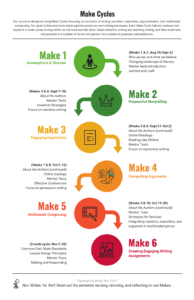 You can find our current Make Cycles in the drop down menu and on the
You can find our current Make Cycles in the drop down menu and on the